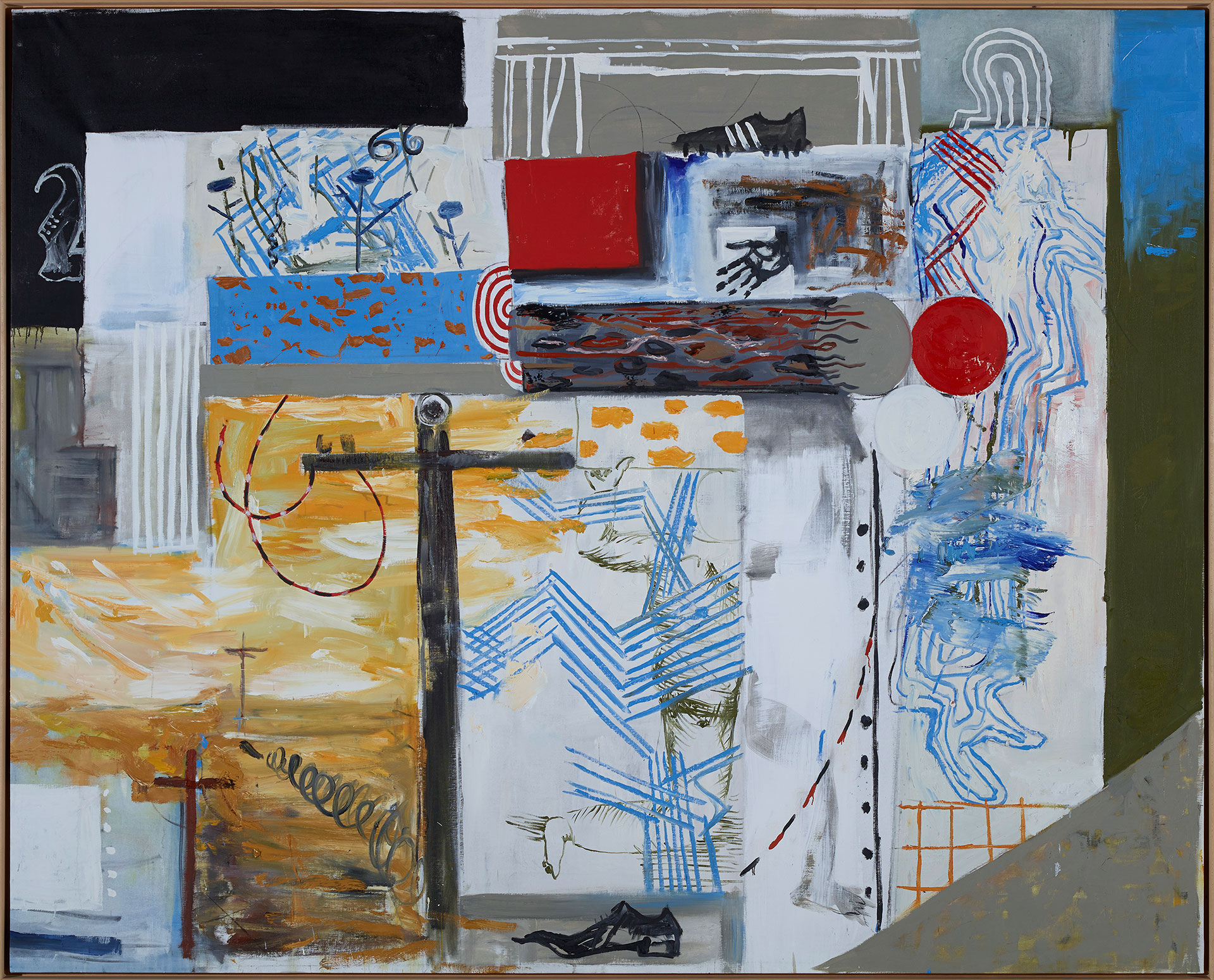
Abraham Lacalle (Almería, 1962)
The Flight
1999
WORK INFORMATION
Oil on linen, 200 × 250 cm
Abraham Lacalle was born in Almería and studied in Seville. His first solo show was held in 1989 at Galería Fúcares in Almagro. In the mid-1990s he received a grant from the Regional Government of Andalusia to attend Casa de Velázquez, and he remained in Madrid in 2002 when he returned to Seville. His relationship with the Marlborough Gallery began during his time in Madrid. Lacalle has participated in numerous shows in Spain and abroad and belongs to the generation of Spanish artists that emerged in the late 1980s. He unapologetically advocated a return to painting at a time when the genre had seemingly been displaced by other trends, especially technology and multimedia. His relationship with the pictorial aspires to recover the act of painting as a transmitter of signs and meanings, as a factory of dreams, parodies and pleasures. Great painters like Picasso and Philip Guston and the Italian Renaissance masters are among his sources of inspiration.
Lacalle's painting uses an intense palette and, though not directly narrative, suggests images and vignettes in the spectator's mind. The title of this painting, La huida [The Flight], refers to a theme that he has addressed on several occasions: the journey and the experience of time when walking in nature, in the city or on the road—which inspired the title of a 2009 show at Galería Alfredo Viñas in Málaga—in which we can detect the influence of authors like Jack Kerouac and Cormac McCarthy.
The sheer size of the picture offers viewers an enveloping experience, a visual immersion in a fragmented space marked by the presence of figurative elements. Utility poles, shoes, a handprint, snippets of landscapes, lines tracing forms: a colourful profusion of diverse overlapping, superimposed images, like a snapshot of the constantly changing perspective of a walker in motion. Lacalle's point of departure is the idea of visual and narrative fragmentation, though he leaves the interpretative clues up to the spectator. The Flight is a compendium of abstract and figurative elements, linear graphics and colours animated by energetic brushstrokes. For some time his paintings have evoked places and passages or journeys, presenting interiors on the same pictorial plane as exteriors, with no spatial distinction, and blurring any hierarchical vision of a central motif in the work. The yellowish landscape dotted with those cruciform poles, the shoes that remind us of the walker, and the figures silhouetted by parallel and concentric lines may be metaphors for thought, for rudimentary maps or for the currents that carry it/him from one territory to another, from consciousness to unconsciousness and from public life to the inner world of the subject. The surface of the painting becomes the place where several things happen at once, with a temporal dimension in which each moment of the picture can remind us not only of a glimpsed instant but also of feelings of isolation, freedom or sociability. [Carmen Bernárdez]

